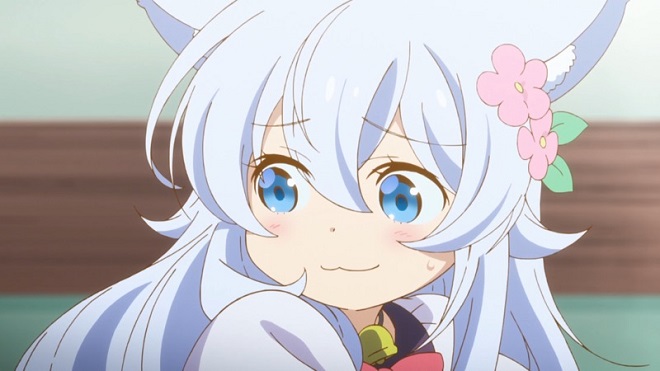Cognition Dissemination: Death of the IndieStation

It doesn’t feel like it was that long ago when Sony was giving special treatment to indie development teams and their software during their promotional events. Entire sections of their live conferences were once dedicated towards showing upcoming indie games, each of which lasted several minutes. This was part of the company’s efforts toward rebuilding the PlayStation brand in the eyes of publishers and the consumer base after the setbacks suffered when Sony couldn’t stop tripping over their own feet during the PlayStation 3 era. But it was still humbling enough that these showcases happened during a time when indie games were climbing the popularity ladder and could have used more exposure.
This era directly led to Nintendo and Microsoft intensifying their own efforts to promote indies, with both starting dedicated lines with cute names and allocating time for them during promotional events. Nintendo eventually provided digital events for indies, something they’ve maintained to this day (as recently as April) with intensified frequency.
But it really has been that long in Sony’s case. This period of them focusing on indie games primarily lasted from 2013 to around 2016, a time when, to put in perspective how long ago this was, Sony was still promoting cross-buy features between the PlayStation 4, PS3, and Vita. It was also a time when the PS4 was derisively referred to as the IndieStation 4, thanks to the dearth of AAA titles in its early years. Plenty has changed in the gaming world since then, including Sony, and not all of that has been for the better.

Indie developers took to social media to air grievances about Sony’s current lackluster policies and support for indie games, many of them using their real names. This started with Iain Garner, a developer based in Taiwan, who provided overt hints about a mysterious hardware manufacturer who’s proven difficult to work with in recent years. “In order to get promotion you must jump through hoops, beg and plead for any level of promotion,” he said in one tweet. “If Platform X doesn’t like your game, no fanfare no feature no love.”
A number of other indie developers, as Bloomberg reported, shared charts showing how their games have sold less on PlayStation platforms compared to other systems. Matthew White of Whitethorn Games posted a chart showing a rough estimate of sales data, denoted with hilarious names that make it easy to figure out who he’s taking about. Cristian Botea, Project Manager for Some Awesome Guys, posted another chart with clues more difficult to figure out. The bulk of their sales were on PC, but PS4 and Xbox One were on the lower end of the spectrum. It’s quite a fall for a platform once regarded as a haven for indie titles.
Bloomberg’s Jason Schreier noted months ago that Sony had heavily shifted their development and promotional focus to multimillion dollar-budget AAA games, including their own and those for which they’ve made promotional partnerships with. This has left their indie communication team severely understaffed. White mentioned how it can take months for Sony to get back to him for questions and requests, and others have assuredly had the same experience.
Sony hasn’t completely halted promoting indie games coming to PlayStation systems in recent months, but they’ve focused on mid- level games launching on their platforms, like Kena: Bridge of Spirits, Sifu, and Solar Ash. Examples of these, including Sifu, were shown on yesterday’s State of Play presentation. Other indie games have been relegated to posts on the PlayStation Blog, which the Garner claimed wasn’t as helpful to sales as Sony likes to think it is.

It’s cynical to think that Sony only heavily promoted indie games between the early-to-middle portion of the PS4’s lifecycle to cover for the lack of AAA games, but that appears to be the case. It took time for Sony’s developers to have the confidence and resources to develop a healthy line of AAA PS4-exclusive titles, and for other publishers to focus on multiplatform games that took advantage of the PS4’s (and Xbox One’s) power. Once Sony had enough big AAA games that made millions upon millions in revenue to fill out their schedule, they could safely cast promotion and, as of recent reports, internal support for most indie games aside. It’s a pity, but it’s perfectly believable.
It’s also believable to think that the majority of the gaming audience will look at this news and not give the slightest shit about it. This can already be seen in the comments sections and tweets about this story, which you can take my word for and not torture yourself by actually reading. Sony’s going to get away with this, at least for the short term. It’s the long term where this could bite them, a possible time when AAA games become sparser than they already are thanks to budgets and resource requirements continuing to balloon. This same logic can apply to Sony’s considerable downsizing of Japan Studio, which solely consists of Astrobot series developer Team Asobi now.
Now that Sony’s issues with indie developers are being documented in a number of publications (not including this blog, though that would be nice), it’s possible Sony will make changes to restrengthen those relationships. But there’s no guarantee of that, and it speaks volumes that Sony let these relationships sour in the first place after key staff departures. It’s good that indie developers have good options on other platforms, but the more viable venues for them to release their games, the better.





